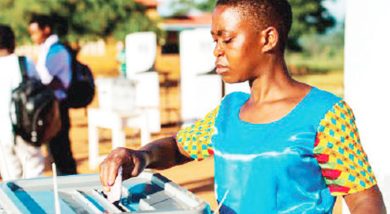New HIV infections high among young people
While the country continues to accelerate its fight against the HIV and Aids pandemic, the 2021 HIV epidemiological estimates show that new HIV infections remain high among the youth.
According to the estimates by the National Aids Commission (NAC), 33 percent new infections are among young people aged between 14 and 25 with 47 percent of all new HIV infections in cities and districts of Blantyre, Lilongwe, Mulanje, Mangochi, Thyolo and Zomba.

On the other hand, the estimates show that 28 percent of undiagnosed people living with HIV (PLHIV) are currently living in the cities and districts of Blantyre, Lilongwe and Mulanje.
While multiple sexual relationships among the youth is being attributed to the new high infections, the brief report on the estimates recommends that programmers must design and implement tailored youth-friendly interventions that addresses the needs and aspirations of young people.
According to the Malawi National Strategic Plan for HIV and Aids for 2020 to 2025, the HIV prevalence among people aged 15 years and above is currently at 9.3 percent.
By disaggregation based on sex, prevalence is 10.8 percent for women and 7.7 percent for men.
Reacting to the development in an interview yesterday, Health and Rights Education Programme executive director Maziko Matemba said minimal investment in the HIV prevention strategy is one of the key factors leading to the high infections.
He said: “Looking at resources for HIV prevention, it has been reduced over time to about nine percent of the total HIV expenditure in Malawi, and the named districts are hotspots due to economic activities.”
Matemba also stressed that since HIV prevention is a continuous process, funding needs to be sustained over time bearing in mind that young people utmost need prevention measures.
In a separate telephone interview, Kamuzu University of Health Sciences professor in epidemiology Adamson Muula said the estimates show that youths are not being reached out in prevention strategies.
“The youths need to be targeted especially the females. You will find that out of that number many of them are female youths. The other worrying thing is that most of our treatment is provided by donor partners.
“So, for how long are they going to provide the treatment for someone very young till when they get old to live their normal lives,” he said.
Further, Muula said the economic costs of having youths contracting HIV is that most of them will not be productive as anticipated and that much effort will be channelled towards treatment and prevention strategies instead of developmental activities.
NAC spokesperson Karen Msiska told The Nation in an interview last month that loose behaviour of some learners in self-boarding tertiary institutions is frustrating the HIV and Aids fight.
He said the number of self-boarding girls engaging in multiple sex partnerships continues to be on the rise, adding that most engage in such risky behaviours to support themselves.
The Malawi National Strategic Plan for HIV and Aids for 2020 to 2025 states that Malawi’s interventions in the fight against HIV and Aids has dramatically contributed to a decline in number of new infections from 111 000 in 1992 to 33 000 in 2019 and Aids related deaths from 71 000 in 2004 to 13 000 in 2019. n W
hile the country continues to accelerate its fight against the HIV and Aids pandemic, the 2021 HIV epidemiological estimates show that new HIV infections remain high among the youth.
According to the estimates by the National Aids Commission (NAC), 33 percent new infections are among young people aged between 14 and 25 with 47 percent of all new HIV infections in cities and districts of Blantyre, Lilongwe, Mulanje, Mangochi, Thyolo and Zomba.
On the other hand, the estimates show that 28 percent of undiagnosed people living with HIV (PLHIV) are currently living in the cities and districts of Blantyre, Lilongwe and Mulanje.
While multiple sexual relationships among the youth is being attributed to the new high infections, the brief report on the estimates recommends that programmers must design and implement tailored youth-friendly interventions that addresses the needs and aspirations of young people.
According to the Malawi National Strategic Plan for HIV and Aids for 2020 to 2025, the HIV prevalence among people aged 15 years and above is currently at 9.3 percent.
By disaggregation based on sex, prevalence is 10.8 percent for women and 7.7 percent for men.
Reacting to the development in an interview yesterday, Health and Rights Education Programme executive director Maziko Matemba said minimal investment in the HIV prevention strategy is one of the key factors leading to the high infections.
He said: “Looking at resources for HIV prevention, it has been reduced over time to about nine percent of the total HIV expenditure in Malawi, and the named districts are hotspots due to economic activities.”
Matemba also stressed that since HIV prevention is a continuous process, funding needs to be sustained over time bearing in mind that young people utmost need prevention measures.
In a separate telephone interview, Kamuzu University of Health Sciences professor in epidemiology Adamson Muula said the estimates show that youths are not being reached out in prevention strategies.
“The youths need to be targeted especially the females. You will find that out of that number many of them are female youths. The other worrying thing is that most of our treatment is provided by donor partners.
“So, for how long are they going to provide the treatment for someone very young till when they get old to live their normal lives,” he said.
Further, Muula said the economic costs of having youths contracting HIV is that most of them will not be productive as anticipated and that much effort will be channelled towards treatment and prevention strategies instead of developmental activities.
NAC spokesperson Karen Msiska told The Nation in an interview last month that loose behaviour of some learners in self-boarding tertiary institutions is frustrating the HIV and Aids fight.
He said the number of self-boarding girls engaging in multiple sex partnerships continues to be on the rise, adding that most engage in such risky behaviours to support themselves.
The Malawi National Strategic Plan for HIV and Aids for 2020 to 2025 states that Malawi’s interventions in the fight against HIV and Aids has dramatically contributed to a decline in number of new infections from 111 000 in 1992 to 33 000 in 2019 and Aids related deaths from 71 000 in 2004 to 13 000 in 2019.





